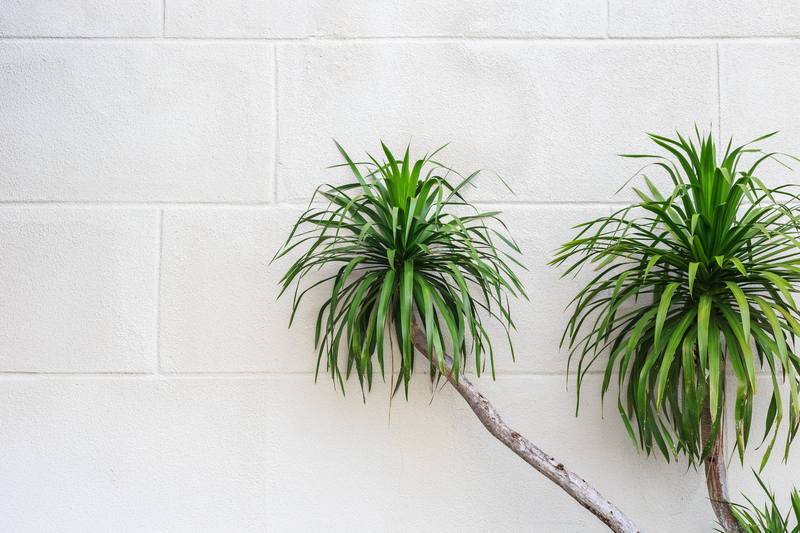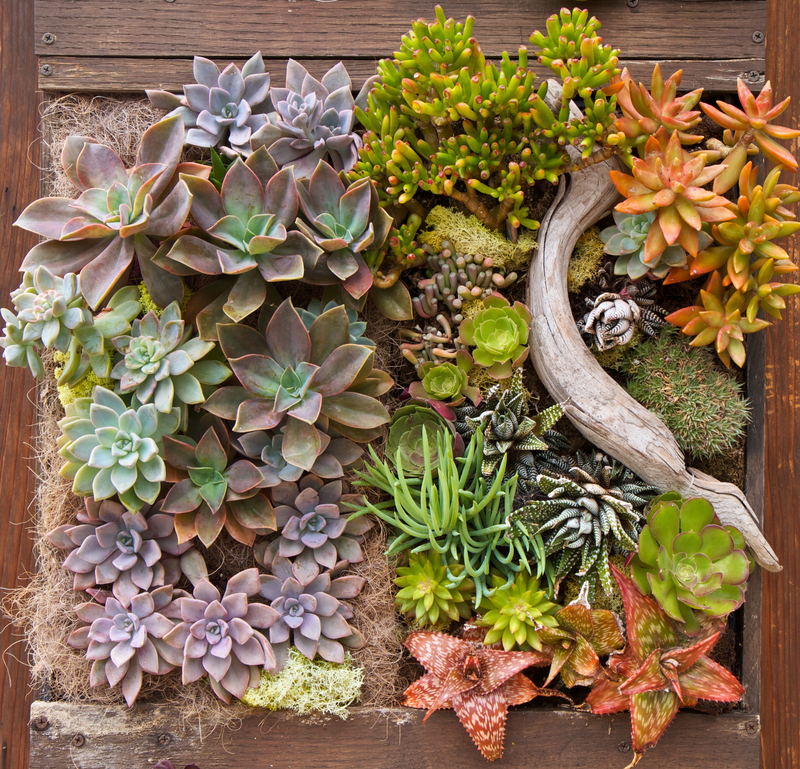Winterizing Your Garden with Ease
Posted on 16/06/2025
Winterizing Your Garden with Ease: An Essential Guide
As the crisp air of fall signals the approaching frost, every gardener wonders how to protect their lush, vibrant outdoor haven. Winterizing your garden doesn't have to be overwhelming or back-breaking. Instead, think of it as a thoughtful investment in next season's growth - a pause that primes your landscape for a thriving spring. In this comprehensive guide, you'll discover step-by-step strategies and practical tips to prepare your garden for winter, safeguarding your plants, soil, and structures with ease and confidence.

Why Is Winterizing Important for Your Garden?
Before you reach for your pruning shears or mulch, it's crucial to understand why winterizing your garden matters:
- Protects delicate plants from harsh cold, frost damage, and desiccating winds.
- Preserves soil health by reducing erosion, nutrient loss, and compaction.
- Reduces spring workload by keeping pests, weeds, and diseases in check.
- Improves your landscape's appearance during dormant months with tidy beds and sturdy structures.
Effective winter preparation sets the stage for a garden that bursts back to life with vigor and health. Let's walk through each step for easy garden winterization.
Step-by-Step Guide: How to Winterize Your Garden
1. Assess Your Garden & Plan
Take a stroll through your garden, notebook in hand. Inspect plants and structures and identify those needing the most attention. Are there perennials to cut back? Shrubs needing protection? Make a list to streamline your efforts.
2. Clean Up Beds & Borders
Remove fallen leaves, spent annuals, decaying vegetables, and broken stems. While natural debris can provide shelter for some beneficial insects, too much can harbor diseases and pests. The key is to strike a balance--leave a thin mulch of leaves in beds, but remove anything that looks diseased or pest-ridden.
- Pull weeds to prevent them from seeding over winter.
- Compost healthy plant material--avoid adding diseased foliage to your pile.
- Cut back annuals and finished perennials to a few inches above the ground.
3. Protect Perennials and Tender Plants
Winterizing perennial beds varies with climate and plant type. Hardy perennials often need little more than mulching, while tender varieties may need extra care.
- Mulch generously: After the ground freezes, add a 2-4 inch layer of mulch (such as straw, shredded leaves, or wood chips) around perennials and root crops. This insulates roots and moderates soil temperature.
- Cover delicate plants: Use frost cloths, burlap, or even overturned pots to shield especially vulnerable flowers or veggies.
- Lift bulbs: In colder zones, dig up tender bulbs like dahlias or gladiolus. Store them indoors in a cool, dry place until spring.
4. Prepare Your Lawn
Lawns are an integral part of many landscapes. For a lush comeback after winter, winterize your lawn in these simple steps:
- Mow one last time at a lower setting to discourage mold and matting.
- Rake up leaves to avoid wet spots and fungal diseases.
- Aerate the soil for better water and nutrient absorption once growth resumes.
- Fertilize with a slow-release formula designed for winter feeding.
5. Divide and Transplant
If you have overcrowded perennials, late fall is an optimal period for division. Gently dig up clumps, split them, and replant while the soil is still workable. This step not only prevents overcrowding but also stimulates more vigorous growth come spring.
6. Care for Trees & Shrubs
Large woody plants benefit from thoughtful winter garden care:
- Water deeply before the ground freezes, especially for evergreens, to reduce dehydration risk.
- Prune dead or weak branches to avoid breakage from snow loads or ice storms. Save major pruning for late winter or early spring.
- Wrap young or sensitive trunks with tree guards or burlap to prevent sunscald and animal damage.
*Tip: Once snow falls, avoid piling heavy snow on shrubs, which can break branches. Gently brush off accumulated snow after storms.
7. Prepare Vegetable Patches & Raised Beds
To winterize your vegetable garden, follow these additional steps:
- Harvest all remaining produce and clear plant residue.
- Plant cover crops like winter rye or clover to enrich the soil and suppress weeds.
- Top beds with organic compost and mulch to maintain nutrient levels and protect soil structure.
8. Take Care of Tools, Water Systems & Structures
A truly stress-free winter garden preparation includes maintenance of your essential tools and infrastructure:
- Drain and store hoses, sprinkler heads, and irrigation lines to prevent freeze damage.
- Clean and oil tools to prevent rust; store indoors or in a dry shed.
- Repair fences, trellises, and raised beds before winter weather causes further deterioration.
Special Considerations for Container Gardens
Winterizing container gardens requires extra care, since roots in pots are more prone to freezing. Here's how to keep potted plants safe:
- Move pots to sheltered areas such as garages, sheds, or against south-facing walls.
- Wrap containers with bubble wrap, burlap, or straw for insulation.
- Water sparingly--moist but not soggy soil prevents dehydration.
Eco-Friendly Tips for Garden Winterization
Environmentally conscious winterization is not only better for your plants, but supports pollinators and soil organisms:
- Leave some stems and seed heads for overwintering insects and birds.
- Mulch with organic materials such as leaves, which decompose and add fertility.
- Choose natural burlap or reusable frost covers instead of plastic for plant protection.
- Utilize rainwater from barrels for final watering and avoid toxic chemicals.

Frequently Asked Questions about Easy Garden Winterization
When should I start winterizing my garden?
Begin preparing your garden for winter when nighttime temperatures consistently drop below 50?F (10?C) and before your area's first hard frost. This timing allows plants to harden off gradually and ensures protection is in place when needed.
What is the best mulch for winter garden protection?
Organic mulches such as shredded leaves, pine needles, straw, or wood chips provide excellent insulation, moisture retention, and decompose to feed the soil.
Should I prune shrubs and trees now?
Remove only damaged or dead branches in autumn. Save major pruning for late winter or early spring to avoid stimulating new growth that could be harmed by cold.
How do I protect roses over winter?
After the first frost, mound 8-10 inches of soil or compost around the base, and cover with straw or leaves. In cold climates, further insulate with burlap wraps or cones.
Winterizing Your Garden with Ease: Final Thoughts
A little effort in autumn pays big rewards. By following these winter garden preparation tips, you're not only protecting the beauty and hard work of the past season but investing in a healthy, flourishing garden for the future. Remember, consistency and care are key. With thoughtful planning, wise mulching, timely pruning, and eco-friendly practices, winterizing your garden becomes second nature--and even enjoyable!
So get out your gloves, grab your rake, and transform winter garden prep from a chore into a celebration of another successful growing year. Your garden will thank you with an explosion of color and vitality come spring!
Quick Checklist: Easy Garden Winterization
- Walk through and assess your garden's needs
- Remove diseased debris, but leave some habitat for wildlife
- Mulch perennial beds and tender plants
- Winterize your lawn - last mow, rake, and feed
- Divide crowded perennials
- Prune dead/damaged branches from trees and shrubs
- Prepare beds with compost, cover crops or mulch
- Drain and store hoses and water features
- Clean and store tools properly
- Protect pots and containers
By following this holistic guide to winterizing your garden, you ensure it not only survives winter, but emerges in spring robust, vibrant, and ready for another season of growth.

